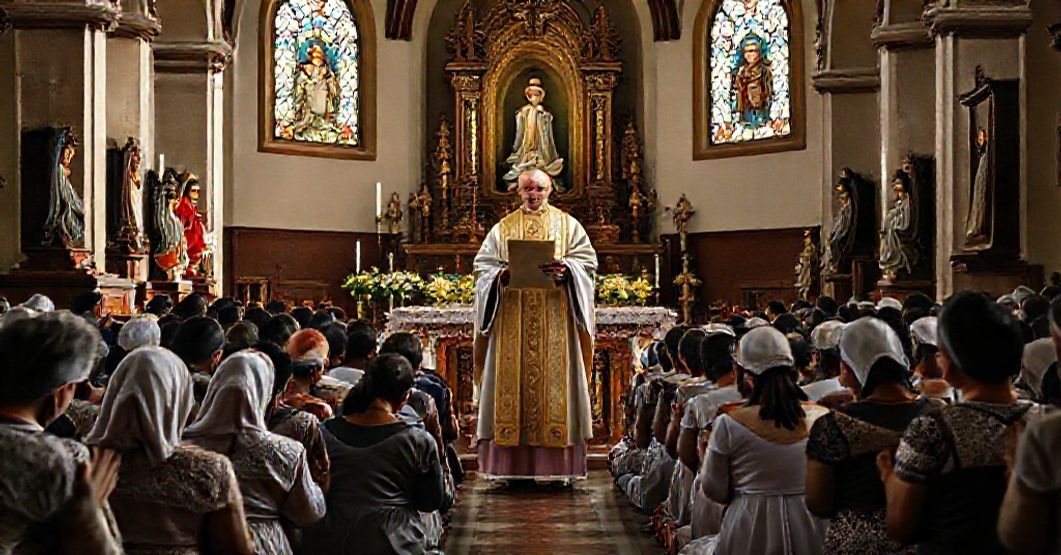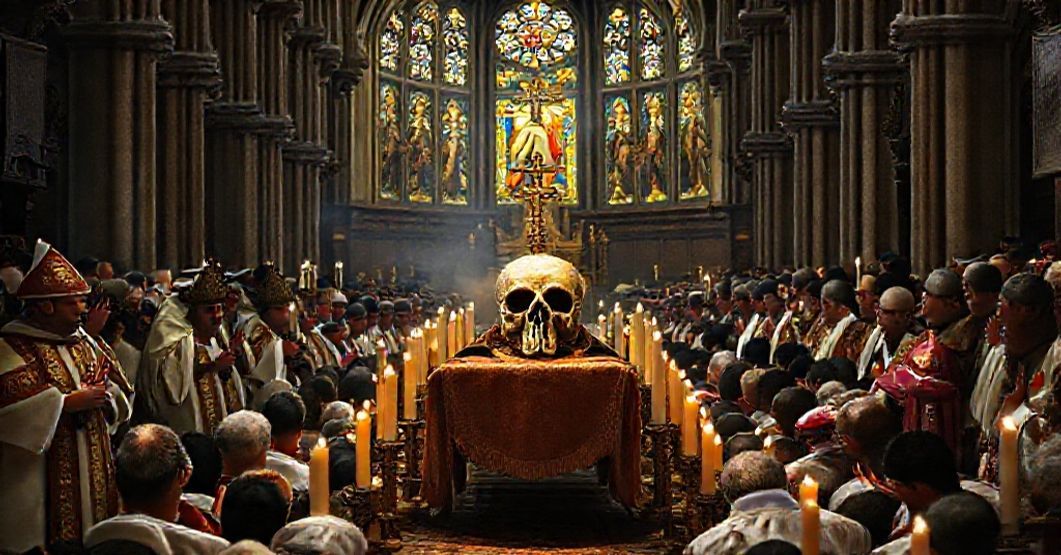Antipopes of the Antichurch



















Timeline of this heretical pontiff
Encyclical Letters
+ 15 posts1959
+ 7 posts1961
+ 4 posts1962
+ 2 posts1963
+ 2 postsApostolic Exhortations
+ 3 postsApostolic Constitutions
+ 93 posts1958
+ 6 posts1959
+ 87 postsMotu Proprio
+ 15 posts1958
+ 1 posts1959
+ 1 posts1962
+ 11 postsApostolic Letters
+ 151 posts1958
+ 4 posts1959
+ 63 posts1960
+ 78 posts1961
+ 1 posts1962
+ 4 posts1963
+ 1 postsSpeeches
+ 99 posts1958
+ 2 posts1959
+ 26 posts1960
+ 29 posts1961
+ 16 posts1962
+ 24 postsMessages
+ 6 posts1959
+ 4 postsHomilies
+ 4 postsLetters
+ 152 posts1958
+ 1 posts1959
+ 48 posts1960
+ 32 posts1961
+ 31 posts1962
+ 30 posts1963
+ 10 postsNot categorized
+ 1 posts1958
+ 1 postsNews feed


CHRISTIANI POPULI (1960.08.18)
Christiani Populi is a Latin document of 18 August 1960 issued by John XXIII, in which he proclaims the image of the Blessed Virgin Mary under the title of the Seven Sorrows (Virgen de Dolores) as the principal heavenly patroness of the diocese of Sololá in Guatemala. The text praises the popular devotion to Our Lady of Sorrows, notes the existence of confraternities and special cult in the cathedral, and, invoking alleged apostolic authority, “confirms” and “again constitutes and declares” this Marian title as Patroness of the diocese with all liturgical honors and privileges due to principal patrons. In other words, beneath pious language about Marian sorrow and Christ’s Passion, John XXIII uses a seemingly minor patronal decree as another act of an authority he did not possess, integrating local piety into the program of the conciliar revolution he was preparing to unleash.


Quod dilectum (1960.08.20)
Dated 20 August 1960 and issued under the name of John XXIII, the apostolic letter “Quod dilectum” is addressed to Cardinal Valerian Gracias and the hierarchy of India on the occasion of their quinquennial meeting, praising ecclesial growth, seminaries, charitable works, lay formation, and hierarchical unity, and exhorting them to collaborate harmoniously for the expansion of the Church in India. Its soothing phrases and selective piety, however, already disclose the programmatic naturalism, ecclesiological dilution, and proto-conciliar strategy by which the conciliar sect prepared its Asian bridgehead: an operation of soft apostasy cloaked in Catholic vocabulary.


Probatum studium (1960.09.03)
Ad perpetuam rei memoriae huius imposturae: the short Latin rescript of John XXIII concerning the transfer of the head of St Venerius, presented as a pious concession to local devotion in the Gulf of La Spezia, orders that the relic (the skull) be moved from Reggio Emilia (church of St Peter) to the church of St Venerius in La Spezia, derogating, if needed, prior norms of Clement VIII on relics, and clothing the whole act with the full weight of supposed apostolic authority, perpetual validity, and canonical efficacy. Beneath this apparently humble gesture of honoring a confessor lurks the same principle that governs the entire conciliar revolution: the usurper on the Chair of Peter manipulates sacred things and venerable devotions to consolidate the counterfeit authority of the neo-church and to shift the faithful’s gaze from the reign of Christ the King and the immutable Magisterium to a sentimental cultic folklore obedient to a paramasonic regime.


Virginis Immaculatae (1960.09.05)
The text promulgated in Latin under the name Virginis Immaculatae (5 September 1960) attributes to John XXIII an act by which the Immaculate Virgin Mary, in her privilege of the Immaculate Conception, is declared principal heavenly patroness of the Diocese of Divinópolis in Brazil, recalling the long-standing Marian devotion of the region and granting the corresponding liturgical rights and privileges attached to a primary diocesan patroness. The entire document, though clothed in pious language and centered on an exalted Marian title defined infallibly by Pius IX, is an act of jurisdiction issued by one who had already initiated the conciliar revolution, and therefore functions as another brick in the paramasonic edifice of the neo-church that occupies Catholic symbols while dissolving Catholic authority.
Varia
Announcement:
– News feed –implemented
– Antipopes separate web sites with their all documents refutation – in progress
